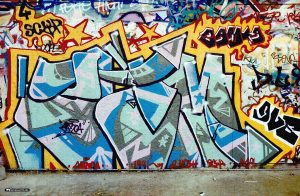Loomit
these are the photos i’ve taken of Loomit’s graffiti work in Munich and elsewhere. To see his current work, look here: https://www.loomit.de/










































Loomit’s influence on the history of graffiti in Munich: A pioneer of street art
Munich, far more than just a metropolis of magnificent Pinakothek art galleries and historic architecture, holds a fascinating history in the shadow of spray cans and creative rebellion. The path to Munich’s rise to become the German graffiti capital was marked by pioneers, including the renowned artist Loomit. In the 1980s, he not only laid the foundations for Munich street art, but also contributed to the Bavarian capital becoming known throughout Europe as the cradle of the graffiti movement.
Before the term “graffiti” gained a foothold in Munich, an enigmatic lettering, “Heiduk”, roamed the city’s streets. Martin Arz, an expert on Munich street art, reveals that this was the beginning of an artistic wave. Originally intended as a prank, Heiduk developed into a phenomenon that captivated the people of Munich thanks to a commune in the Schlachthof district.
The real birth of graffiti in Munich came in the early 1980s, when the young Mathias Köhler, better known as Loomit, came onto the scene. Growing up in Buchloe, in the Ostallgäu region, he became a pioneer of the German graffiti scene. Inspired by the film “Wildstyle” in 1983, Loomit recognized the creative potential of graffiti and set out to cover Munich with color.
The night of 1985 will forever remain etched in the annals of graffiti history. Loomit and six fellow campaigners created a European premiere at the Geltendorf S-Bahn terminus – the first Wholetrain in Europe. Despite the icy cold and adverse conditions, they created a work of art on rails that not only attracted the attention of the press, but also the burgeoning European graffiti scene.
The Wholetrain did not go unnoticed. The railroad police and the media became aware of the sprayers. Loomit himself had to do community service, but this was only a brief setback. His growing fame enabled him to decorate the walls of private individuals and even the bathroom of Munich’s Lord Mayor Christian Ude. Loomit became a recognized street artist who is still active today.
Munich, once considered a mecca for sprayers alongside New York, has made a unique contribution to graffiti history. Thanks to creative minds such as Loomit and supportive personalities such as ethnology professor Peter Kreuzer, the scene developed rapidly. Today, despite changing urban landscapes, traces of this eventful past can still be discovered.
Loomit’s influence on the history of graffiti in Munich is not only a tale of artistic rebellion, but also a journey through the development of a scene that made Munich a major center of street art. His creative legacy and his contribution to the graffiti movement are still visible in the streets of Munich today.




